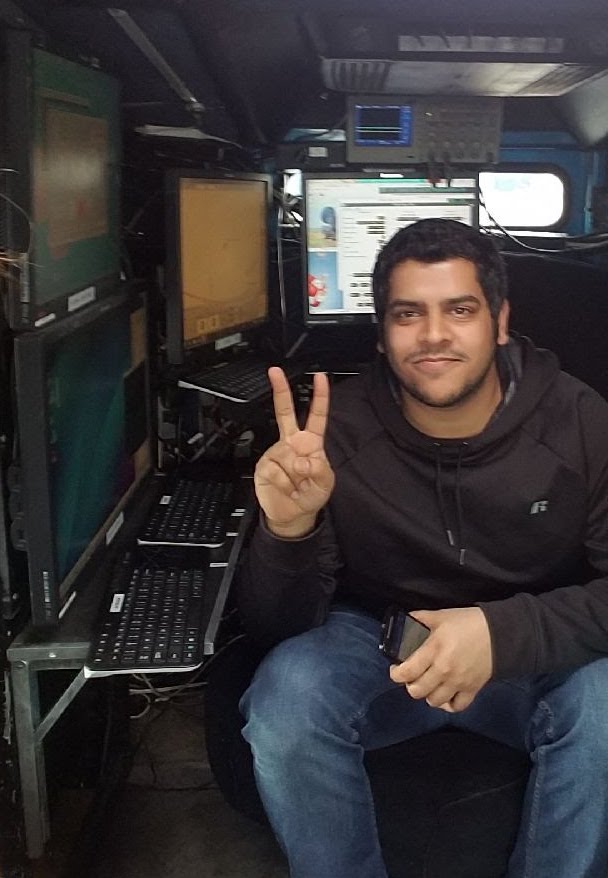Milind Sharma

Earth, Athmospheric & Planetary Sciences
Mentor / Lab:
Robin Tanamachi / Weather Radar Research Lab
Specific Research Area / Project:
Polarimetric and electric characteristics of severe convective storms
Undergraduate Institution:
National Institute of Technology, Jalandhar, India
Lab / Personal work-related websites:
Personal WebsiteResearch Profile:
Every year billions of dollars and dozens of lives are lost due to severe storms occurring in the United States. In 2017, the total economic loss due to extreme weather events amounted to more than $16 billion with severe storms including tornadoes contributing significantly to this threat. Understanding the severity of such storms and identifying the precursor signaturesm of tornadogenesis usingdifferent observing systems is very crucial to ensure minimum damage to the society. Records show that the lead warning time for tornadoes has improved over the past past few decades due in large part to the nation-wide installation of Weather Surveillance Radar 1988 Doppler (WSR-88D). The challenge, therefore, is to overcome the limitations of the currently operational radar systems in order tomaximize the tornado warning lead time
WSR-88Ds have a 4-6 minute volumetric rate update of data which is a crucial limiting factor for capturing tornadogenesis. Although efforts have been made to overcome this limitation by increasing the frequency of radar data using novel scanning methods, the performance of these techniques varies considerably depending on factors like weather conditions and the range of a target storm from the radar.
My research aims to contribute towards the elimination of this limiting factor by collecting data using cool instruments like phased-array weather radars which collect data at least five times faster than WSR-88Ds. In addition to weather radars, I also use data from lightning mapping array (LMA) network which detects the propagation of leader channels in intra-cloud (IC) and cloud-to-ground (CG) lightning flashes. Through my dissertation research I aim to understand the relationship between a thunderstorm's severity, electrification (lightning), and the associated cloud microphysical process. I aim to develop better understanding of storm dynamics and microphysics through these datasets. I believe that an improved conceptual model of tornadogenesis would be a great value addition to thunderstorm science.

About Me:
My academic journey has been a very unique and non-linear process. As an undergraduate student I was trained to be a civil engineer with a master's degree in hydrological sciences. Subsequently in my doctoral programme, I moved to research in atmospheric sciences. ESE was definitely a fittting choice for an inter-disciplinary researcher like me. I must admit that I feel really lucky to have been able to develop skill sets for engineering as well as science research.
My future goal is to continue my research endeavors and inspire the next generation of scientists to further the horizons of our scientific knowledge. Teaching, apart from being a noble profession is also an avenue to actually improve critical thinking. I cannot think of a better opportunity to research alongside teaching than see myself serving as a faculty member. It is no secret that there are lots of pressing issues that plague our society at present. The complex nature of these issues need collaborative thinking efforts and strategies. I want to be an active contributor to scientific studies and campaigns through participation in field studies, designing experiments to investigate and question the unexplored territories in weather science.
Awards:
- 2016 ESE Lynn Fellowship
Presentations:
- Milind Sharma, R. Tanamachi, E. C. Bruning, K. M. Calhoun, H. B. Bluestein, J. B. Houser, J. C. Snyder, and Z. B. Wienhoff. A Case Study of Kinematical, Microphysical, and Lightning Characteristics of a Tornadic Supercell (to be presented on October 25, 2018 at Severe Local Storms conference going to held in Stowe, Vermont){Poster}
- Milind Sharma, R. Tanamachi, E. C. Bruning, K. M. Calhoun, H. B. Bluestein, J. B. Houser, J. C. Snyder, and Z. B. Wienhoff. Observational Analysis of the Electrical and Kinematic Structure of a Tornadic Supercell (to be presented during Januray 6-11, 2019 at American Meteorological Society annual meeting going to be held in Phoenix, Arizona){Oral}
- Milind Sharma, R. Tanamachi. Charge analysis and flash properties of the May 13, 2013 tornadic supercell in Oklahoma (to be presented at Dawn or Doom poster competition at Purdue University on November 5).
Leadership:
- Volunteered for the Doppler on Wheels (DOW) radar educational outreach activity at Purdue University during Spring 2018.
- Participated in the Urban Climate workshop held at Indian Institute of Technology, bhubaneswar during summer 2017.

